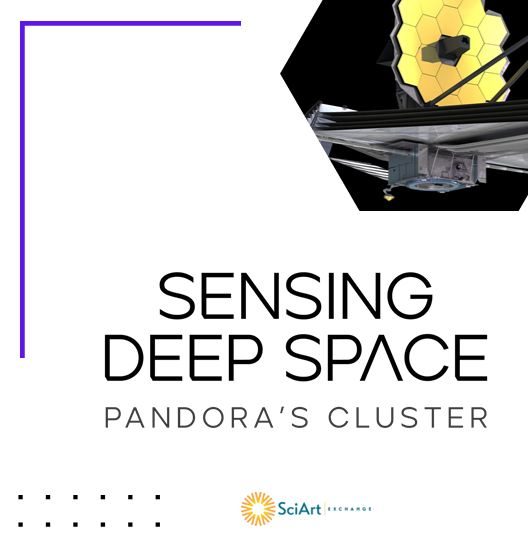So here goes:
Deep Sensing is, perhaps, an OBSERVATORY OF CRITICAL ZONES. In January 2024, Richardson Texas, you will be able to sense deep space:
You will be accessing the latest data from big telescopes in orbit and on earth to sense the universe we are embedded in (details at the end of this blog).
At the simple level, the team is converting NASA data into sensory experiences involving sight, sound, touch and walking around. No human has ever been to the places you will be “visiting’. What you
will experience are ‘fabrications’ made a team of artists, scientists,
administrators and…
By that I don’t mean that they are ‘false’ but that they are “made up’’ so we can make sense of these places. In some cases they may be false “hallucinations’, but we can only find that out by collecting different kinds of data.
The place you will be visiting has been named by some humans as “the pandora cluster’ a collection of galaxies orbiting each other. Go figure why this name makes sense.
About the Author:
Roger F. Malina is a space scientist and astronomer, with a specialty in extreme and ultraviolet astronomy, space instrumentation and optics. He served as director of the Observatoire Astronomique de Marseille Provence and was NASA Principal Investigator for the Extreme Ultraviolet Satellite project at the University of California, Berkeley.
He is also a publisher and editor in the new emerging research fields that connect the sciences and engineering to the arts, design and humanities. Since 1982, he has served as Executive Editor of the Leonardo Publications at MIT Press. He founded, and serves on the board of two nonprofits, ISAST in San Francisco and OLATS in Paris, which advocate and document the work of artists involved in contemporary science and technology.
He is currently a Distinguished Professor of Art and Technology and Professor of Physics, at the University of Texas at Dallas and Directeur de Recherche for the CNRS in France. He serves as the Associate Director of ATEC, and founded the ArtSciLab in the ATEC program fall 2013.
